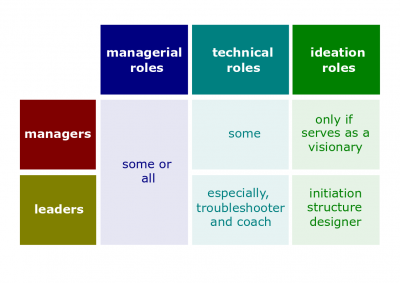Difference between revisions of "Leadership role"
(Created page with "400px|thumb|right|[[Leadership role]]Leadership role (hereinafter, the ''Role'') is a specific action or behavior expected of and exhibite...") |
(→Related coursework) |
||
| Line 5: | Line 5: | ||
*[[Leading]]. A [[management function]] that involves working with and through people to accomplish organizational goals. [[Leading]] includes motivating employees, directing others, selecting the most effective [[communication channel]]s, and resolving [[conflict]]s. | *[[Leading]]. A [[management function]] that involves working with and through people to accomplish organizational goals. [[Leading]] includes motivating employees, directing others, selecting the most effective [[communication channel]]s, and resolving [[conflict]]s. | ||
| − | ==Related | + | ==Related lectures== |
*[[Leadership Quarter]]. | *[[Leadership Quarter]]. | ||
[[Category: Septem Artes Administrativi]][[Category: Articles]] | [[Category: Septem Artes Administrativi]][[Category: Articles]] | ||
Latest revision as of 18:45, 4 January 2019
Leadership role (hereinafter, the Role) is a specific action or behavior expected of and exhibited by a leader. Besides some or all managerial roles, leaders are often serve as coaches, troubleshooters, and, after changes, are expected to exhibit initiating structure behaviors.
Related concepts
- Initiating structure behavior. The extend to which a leader defines her or his role and the roles of group members in attaining goals.
- Leading. A management function that involves working with and through people to accomplish organizational goals. Leading includes motivating employees, directing others, selecting the most effective communication channels, and resolving conflicts.
